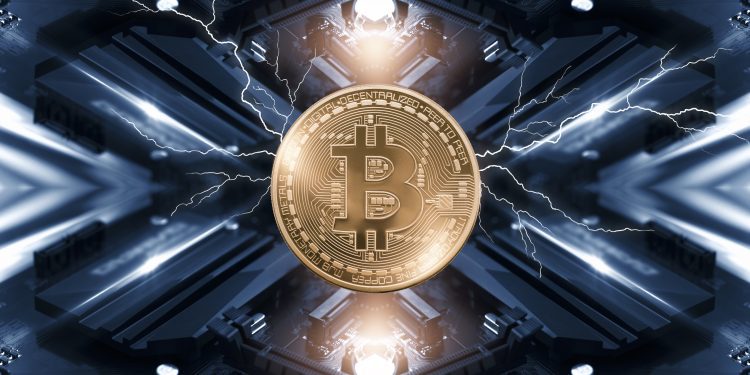Many companies have realized that they can’t rely on an international banking system flogged with supply chain issues and wire transfer delays. This has pushed the world to consider a circular economy and the digitization of currencies for real-time settlements when buying and selling products.
This adoption is largely driven by developing countries looking to confront supply chain issues and adopt crypto or fiat settlements via the Lightning Network to have quicker, faster, and better payments. For example, Guatemalan developers from the IBEX Mercado founding team are building projects on the Network to allow business owners to buy and sell cryptocurrency as retail infrastructure and purchase Bitcoin for savings.
Let’s look at what the Lightning Network does and the advantages it poses.
What is the Lightning Network?
When Bitcoin first came about, you simply sent a request to the blockchain network to send a transaction. Your payment got included in a block, you paid a small fee to miners, and your transaction was added within 10 minutes and confirmed within an hour. That changed as Bitcoin gained popularity; with more transaction requests on-chain ledger, the network couldn’t meet the demand.
The developers behind the Lightning Network claim it will solve Bitcoin’s scalability problems. As a second-layer payment protocol, it is designed to be layered on top of blockchain-based cryptocurrency technology and intended to enable fast, off-chain transactions among participating nodes, boosting the opportunity for liquidity and real-time settlements.
The Lightning Network creates open channels between users for small, cheap payments and trades IOUs back and forth before settling accounts on the blockchain, leveraging zero-proof trust and arbitration.
Lower costs of transactions
The Lightning Network means financial freedom, independence, and huge cost savings, especially for small businesses. Sometimes, 2-3% of small businesses’ gross revenue is lost to credit card fees due to vendor, supplier, and utility payments. If these companies began using the Lightning Network, they would dramatically reduce the costs of these transactions.
However, while there’s more autonomy regarding your payments strategy, this comes with more responsibility. You are basically your own bank, securing funds independently and doing the underwriting for your transactions. This is why large enterprises are still concerned about the Network from a regulatory perspective.
Real-time settlements
If you want to settle Bitcoin directly, it is easy; you can send it over the Lightning Network using the channels to reach a wallet or merchant. But if you wanted to settle in fiat, not Bitcoin, there’s a solution to convert the fiat into Bitcoin in real-time and send it to a merchant.
In the past, investors had to go through a transfer wire, and the money could potentially take days to land in an account. Traditional financial institutions still can’t do real-time settlements due to siloed approaches. But with the Lightning Network, you can settle a fiat transaction in real-time, meaning instant liquidity. You can convert Bitcoin to fiat at any hour of the day on a fully functional cross-border platform, which has never existed before. The funds are fungible, and the movement is logged on the ledger, so there is proof the money has been sent; no follow-ups, delays, or closures on bank holidays.
Less energy usage
Let’s admit that the narrative around Bitcoin’s energy consumption hurt the movement – but the Lightning Network fixes this. It scales non-proportionally to energy usage and is designed to work on a peer-to-peer network, leveraging other people’s existing connections.
Essentially, as the second layer, it supports off-chain transactions and does not use the computational power necessary to confirm blocks on-chain or upload transactions to the blockchain (the first layer).
In 2021, Galaxy digital estimated the total annual energy consumption of the existing banking system to be 263.72 TWh usage. Bitcoin’s energy usage may seem large at face value, even on a purely transactional level, but the carbon emissions are even lower than some everyday activities that few describe as excessive energy use – and The Lightning Network is behind this.
What the future holds
The Lightning Network is still susceptible to fraud or malicious attacks as there aren’t as many safety measures in place as there are with card networks. If someone stole your account and used your funds over the Network to pay for goods and services, you wouldn’t be able to get it back. You have to protect your credentials, educate yourself, and take responsibility for your own safety. That can often be seen as a hurdle for small businesses and startups who have their fingers in many pies.
At Bleu, a payments technology solutions company, we are passionate about providing some of the security layers for these transactions through device identification and biometric authentication. Device authentication when making payments could prevent hackers from taking someone’s funds or wallet and spending at a participating merchant’s location.
Combining the Lightning Network with Bluetooth technology can also confirm and facilitate transactions offline, without the need to connect to the internet via TCP/IP. If you are ever in a country where it is difficult to access certain platforms or technologies on specific servers, such as the Lightning Network, you need an offline consensus.
The Lightning Network can handle potentially infinite transactions per second cheaply and efficiently while avoiding overburdening the blockchain. It is still fairly new but it is also key to the success of the future of crypto payments.










